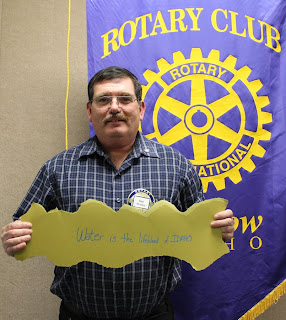by Will Broussard
As many of you know, Art for Water promotes awareness for the global water crisis through the creation of public participation art installations. Today, 2.6 billion people live without basic sanitation, and 1.2 billion people lack access to clean drinking water. Fortunately, we are not alone in spreading the facts. Yesterday was the United Nation's
World Water Day, a day of education and festivities focused on the global water crisis. Every year the UN chooses a theme for the special day, with this year being "Water and Food Security."
 |
| Italian roast to keep me going at 2pm |
Right now, we share the planet with 7 billion people. By 2050 that number is expected to rise to 9 billion. An increasing demand for a decreasing resource highlights the importance of educating ourselves in how much water we use so that we may become better stewards of this resource in the future. Did you know that most of the water we ingest on a daily basis comes to us in the form of the foods we eat? Our meals, from the cereal we ate for breakfast to the hamburger we ate for dinner all require water to grow, ship, and prepare. Agriculture and livestock production are the most water intensive activities. According to
Waterfootprint.org, an average of 52 gallons of water are required to grow a single pound of cereal, and 1,018 gallons of water is needed for every pound of bovine meat produced. For a single cup of coffee, 37 gallons of water are necessary to grow the plant that produces the beans that are then roasted and seared with boiling water to be drunk hastily by you and I. Apart from just drinking it to quench our thirst, it is amazing to think about how much water is required to feed our world. As the UN puts it, "it takes one thousand times more water to feed the human population than it does to satisfy its thirst." What a revelation.
So, knowing now how much water goes into producing the foods we eat, what can we do to curb our water use? In addition to the advice about reusable water bottles and attention to leaky faucets, we can begin chipping away at the global water crisis by thinking about what we eat and where it comes from. We can research what foods are the most water costly, and eat these more sparingly, or eliminate them from our diets completely. We may also want to think about growing some of our own food, or consider supporting a local CSA (community supported agriculture) program, which will reduce the amount of gasoline required to transport the produce from the ground to your stomach. Locally grown food decreases our water footprint and dependence on foreign oil, ultimately increasing our level of domestic food security for future generations. Speaking of food security, the city of Seattle, Washington may be ahead of the curve as it is in the developmental stages of an
urban food forest to be built in the center of the city. If the test plots prove successful, the final 7-acre forest will be the "largest urban food forest on public land" in the entire country. Very cool!
As World Water Day wrapped up globally and another unseasonably warm afternoon in Harrisville came to an end, I wanted to leave us with a story of hope. For those of us, including myself, who are prone to pessimism over feelings of insignificance regarding our ability to influence the global water crisis, it is important to be mindful of how individual actions add up. Wendy Pabich, friend of Art for Water, environmental scientist, and creator of the blog
Hydrophilia, tells a
story of a Pakistani man's New Year's pledge to reduce his ecological footprint. In a landscape desperate for water, he determines that if he alone turns his faucet off while shaving, it saves the country 1,900 gallons of water annually. After doing some quick math he determines that if every clean-shaven man in his country were to do this, it would save 40 billion gallons of water every year, or "enough to grow 70,000 acres of wheat, 24,000 acres of rice." Very simple, very impressive. Small acts will add up, and we should not underestimate our collective power. Our future depends on it.
Happy World Water Day!



.jpg)
.jpg)
























